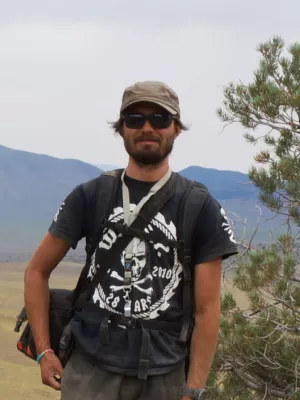
Anders Lindskog
Postdoc

Progressive marine oxygenation and climatic cooling at the height of the Great Ordovician Biodiversification Event
Författare
Summary, in English
The oxygen content of ancient seawater has been hypothesized to be a major controlling factor for biodiversity throughout Earth's history. The Great Ordovician Biodiversification Event (GOBE) represents one of the largest increases in biodiversity during the Phanerozoic, with peak rates of diversity occurring in the Middle–Late Ordovician. Multiple causal factors have resulted in this long-term adaptive radiation, but direct links to marine oxygen levels remain poorly characterized. Here we utilize a multiproxy dataset from the Röstånga-2 drillcore, Skåne (Scania), southernmost Sweden, to constrain local and global marine paleoredox dynamics using a multi-proxy approach throughout the Middle–Late Ordovician (Darriwilian–early Sandbian stages). Pyrite sulfur isotopes (δ34Spyr), iron speciation and trace metal concentrations (V, U, and Mo) all indicate pervasive locally reducing conditions, and thallium (ε205Tl) isotopic compositions indicate significant changes in global Mn-oxide burial. This is one of the first studies to utilize direct local and global paleoredox proxies to identify changes in marine oxygen associated with peak rates of biodiversification in the Ordovician. Our new thallium isotope and pyrite sulfur isotope trends from black shale are combined with previously published carbonate-based redox proxy data (δ238U and δ34SCAS–carbonate-associated sulfate) from time equivalent successions in Baltica, Laurentia and Argentine Precordillera, indicating a global shift towards enhanced Mn-oxide burial, decreased anoxic seafloor area, and decreased pyrite burial, respectively. Thus, oceanic conditions during the Middle–Late Ordovician are interpreted to have transitioned from pervasive, highly reducing conditions towards more oxygenated marine settings. These changes in global paleoredox coincide with paleotemperature proxy data that indicated an overall climatic cooling trend during this time. Significant cooling of Ordovician oceans and climate would have permitted enhanced ventilation of marine environments, that in turn likely facilitated new ecospace development/utilization and ultimately drove marine biodiversification. Our results show a protracted, yet progressive oxygenation of marine environments over an interval of ∼11 Myr coinciding with peak rates of biodiversification during the GOBE.
Avdelning/ar
- Berggrundsgeologi
Publiceringsår
2023
Språk
Engelska
Publikation/Tidskrift/Serie
Global and Planetary Change
Volym
227
Länkar
Dokumenttyp
Artikel i tidskrift
Förlag
Elsevier
Ämne
- Geology
Nyckelord
- Marine biodiversity
- Middle Ordovician
- Paleoredox
- Sulfur isotopes
- Thallium isotopes
- Trace metals
Status
Published
ISBN/ISSN/Övrigt
- ISSN: 0921-8181

